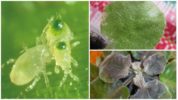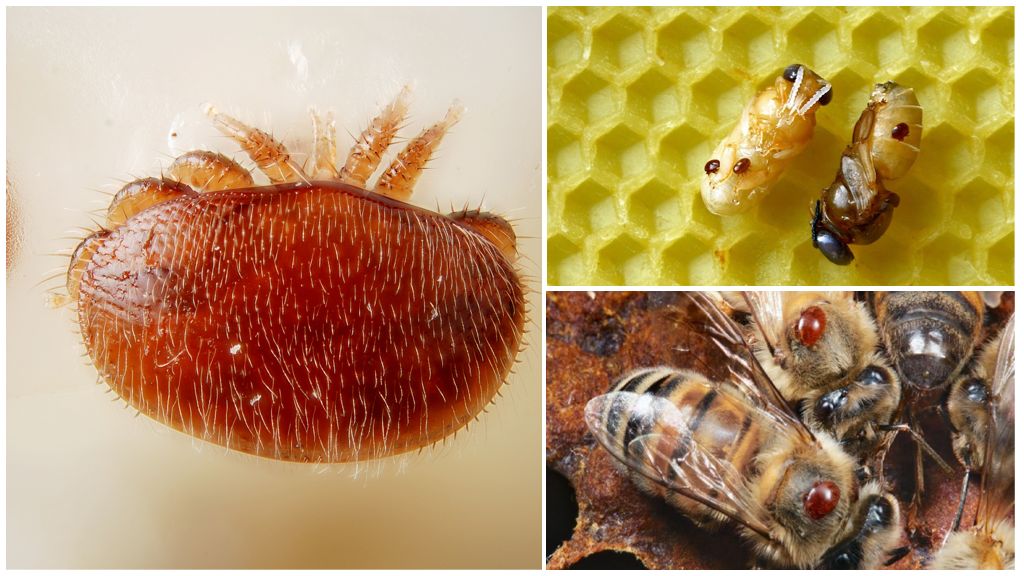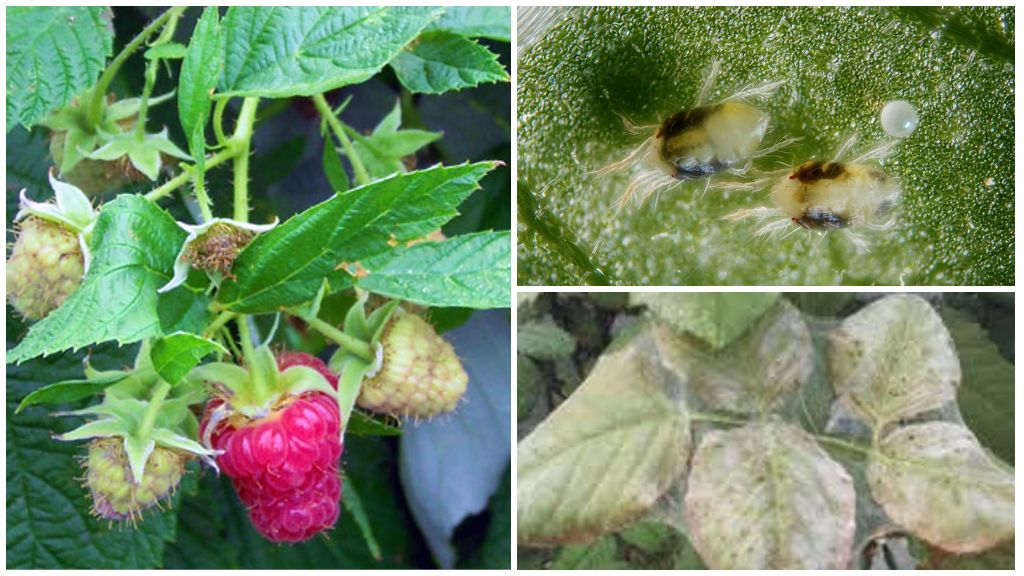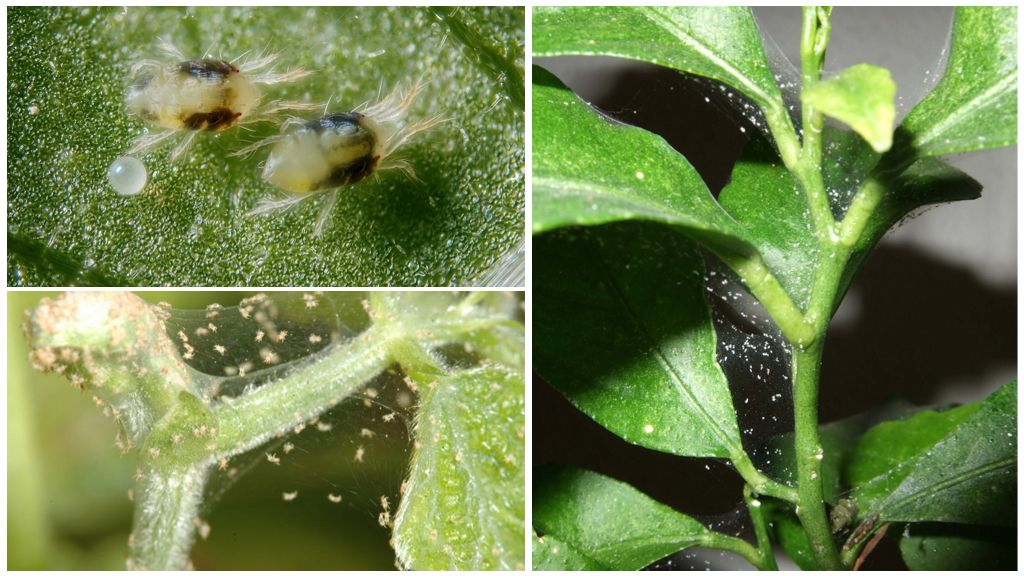- Cyclamen tick on violets
- Chemical pesticides
- Tick ploskotelk on violets
The cyclamen tick is a microscopic but dangerous pest that poses a threat to many indoor plants: violets, cyclamen, azaleas, Kalanchoe, etc. You can save flowers not only with chemicals, but also by adjusting their conditions.
Description and differences
Cyclamen or strawberry mites (lat. Phytonemus pallidus) differ in the smallest sizes (100-250 microns), therefore they can be examined only with a microscope. According to the classification, they do not belong to insects, but to arthropods of the arachnid class.
Ticks have a translucent light yellow body and 4 pairs of paws, live on young shoots of green shoots and in buds. The main diet of their food is plant cell juice. In addition to indoor flowers, they hit the bushes of strawberries and strawberries, for which they received their second name.
Ticks can reproduce very quickly: each female lays 12-16 eggs daily, from which larvae appear within 3-7 days, they quickly mature and turn into adults in a week, ready to breed further.
On a note!
The most important stimulator of their reproduction is dry air and heat, which are a favorable environment for development. Therefore, the peak activity of cyclamen mites occurs in dry, hot weather in the summer months and during heating in winter.
Signs of defeat in violets
It is possible to determine that parasites have settled on indoor plants by the following external signs (see photo of ticks on violets):
- the appearance of a “dusty” coating in the folds of young green leaves, in nascent buds and in the apical shoots of violets;
- flower growth slows down and its deformation occurs, leaves turn yellow, grow dull and become brown-gray, then twist;
- leaves and petioles become brittle and dry;
- the buds fade and fall, not having time to open;
- long hairs appear on young leaves, which signal the appearance of a cyclamen parasite.
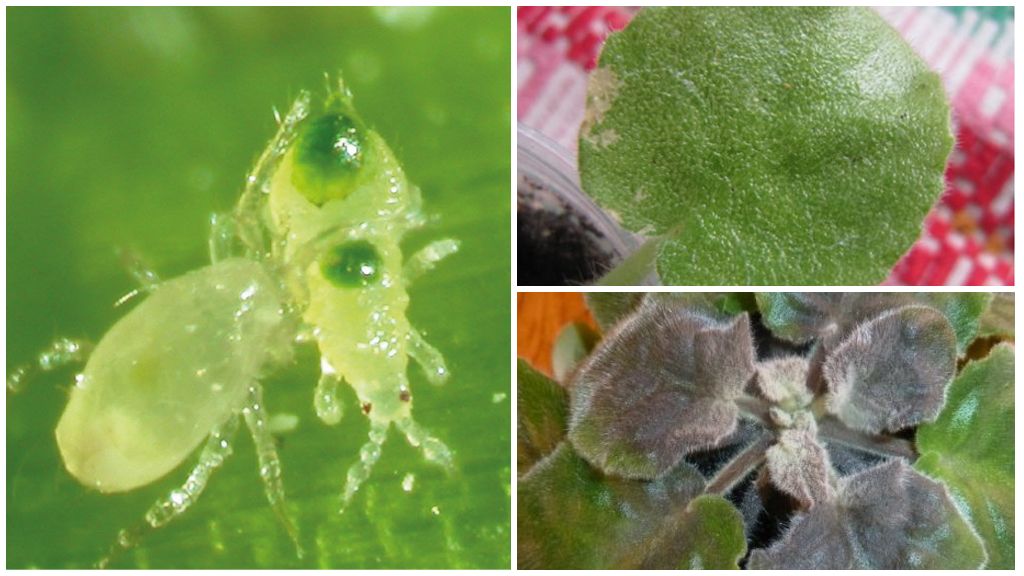
Important!
If such signs of mites are found on violets, cyclamens and other domestic plants, it is necessary to immediately isolate them from other flowers. Then you need to do his treatment.
Methods of combating ticks on flowers
The fight against cyclamen tick on violets can take place in various ways:
- the use of folk recipes;
- the use of chemicals.
The most popular folk remedy is immersion of the affected bush of violets in hot water at a temperature not lower than 45 ° C. First, all affected parts of the flower should be removed. The duration of the "bathing" is 15 minutes. However, it is necessary to maintain a constant water temperature at the desired level.
After the water procedure, the bush is placed in a shaded place to allow it to recover within a few days. Then it can be returned to its original place.
Use of chemicals
The first step in the treatment of ticks should be the complete elimination of all affected parts of the plant and infected peduncles.Then it is necessary to wipe the leaves and other green parts of the violet with acaricidal agents: Actofit, Fitoverm, Akarin, Agravertin. To completely get rid of ticks, the procedure must be repeated every 3 days, and then once every 5 days. If the lesion is severe, it is recommended to completely dip the bush of violets in a solution with acaricide or avermectin agents.
On a note!
Popular chemical insecticides have no effect on ticks. Arthropods very quickly develop resistance to poison, but it does not destroy their eggs - they can remain viable for several years.
Chemical tick control measures imply a frequent change of drugs to increase the effectiveness of the fight and reduce addiction to them. Therefore processing acaricides should be carried out in several stages, each time changing the drug.
Drugs such as ticks work well Tick-borne, Anti-tick, Neoron, Sunmight, Omight. However, the treatment must be carried out in a non-residential premises, and after spraying, violets are covered with polyethylene for 8-24 hours.
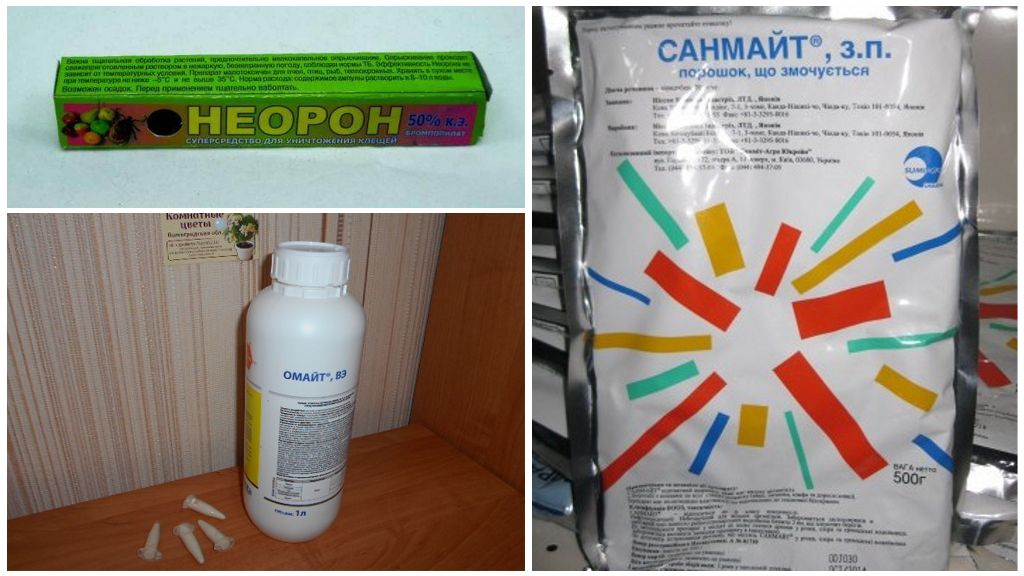
Due to the high toxicity of these drugs, it is imperative to use personal protective equipment (respirator, gloves and protective clothing).
Precautions when processing violets:
- Do not prepare the solution in dishes intended for food;
- no need to add soap, because alkalis are incompatible with avermectin agents;
- all prepared solutions should be used quickly, and then destroy the residues;
- it is impossible to carry out processing in a residential building - it is dangerous for the health of people and pets.
Important!
After processing and treatment, the bush of violets must be quarantined, i.e., isolated from healthy specimens. And only after 3-4 weeks, after the appearance of fresh shoots and the obvious absence of signs of ticks, the flower can be rearranged in its usual place.
Other types of ticks
Spider mite belongs to the superorder Acariformes (Acariformes), has more than 1200 species. The size of the parasites is less than 1 mm, the color is green in the summer, and red is in the spring and autumn. The tick is a dangerous pest that affects berry and fruit crops in the garden. Settles on the lower parts of leaves, covering them with a fine web. Small parasites suck out all the juices from the shoots of violets, which quickly leads to their browning and drying out. Fight a spider mite on indoor plants can be acaricides, folk remedies.
Tick flat-bodied on violets - differs from others in its ovoid body shape and color (yellow-orange or brick). Such parasites settle on domestic ficuses, cacti, citrus and other indoor plants. The leaves begin to fade, which leads to rapid death. Their danger lies in their adaptability to rapid reproduction at ordinary room temperature (+ 18 ... + 24 ° C), due to which they are able to lay eggs all year round. The fight is carried out using acaricidal chemicals.

Root or bulbous mites - damage the underground parts of plants, mainly bulbous species (gladioli, tulips, orchids etc.). Propagate at high humidity, so the main preventive measure is to store the bulbs in a dry form in a cool place with humidity up to 60%.
Tick Prevention
In order to avoid the multiplication of ticks on the violet bushes, it is necessary to create optimal and favorable conditions for them: top-up, watering, maintain the desired temperature and light, which are necessary for this species.
On a note!
Attacked parasites are more often susceptible to weakened specimens.
Experts recommend that preventive measures be taken in the form of regular bathing of violets in dry and hot times, and also not to combine them in a room with other plants, on which parasites easily wind up (roses etc.).
Tips on how to clean the violet:
- the procedure should be carried out only in running water, and not in a basin;
- hold the pot and violet in your left hand, holding the socket between the middle and index fingers, and the container itself with the others;
- a stream of water is sent to the lower side of each leaf;
- do all the procedures with your fingers, because sponges and rags only contribute to the spread of infection;
- try to ensure that water does not fall into the center of the outlet, on the flowers and the container itself;
- if the violet blooms, then it is permissible to use a little warm, if not, it is better to make it hot (up to + 40 ° C);
- you can not swim if the leaves are rotten or there is a suspicion of rotting of the roots;
- You can not bathe violets in the autumn-winter period in the absence of heating;
- After the water procedure, you should remove the moisture with a soft paper towel, moving it from the center of the outlet.
Conclusion
The appearance of cyclamen mites is much easier to prevent by observing the rules for the care and maintenance of violets and other indoor plants: optimal temperature conditions, humidity, top dressing and watering. Do not allow the air to dry out in the room, bathe and prevent the ticks from moving from neighboring plants.
